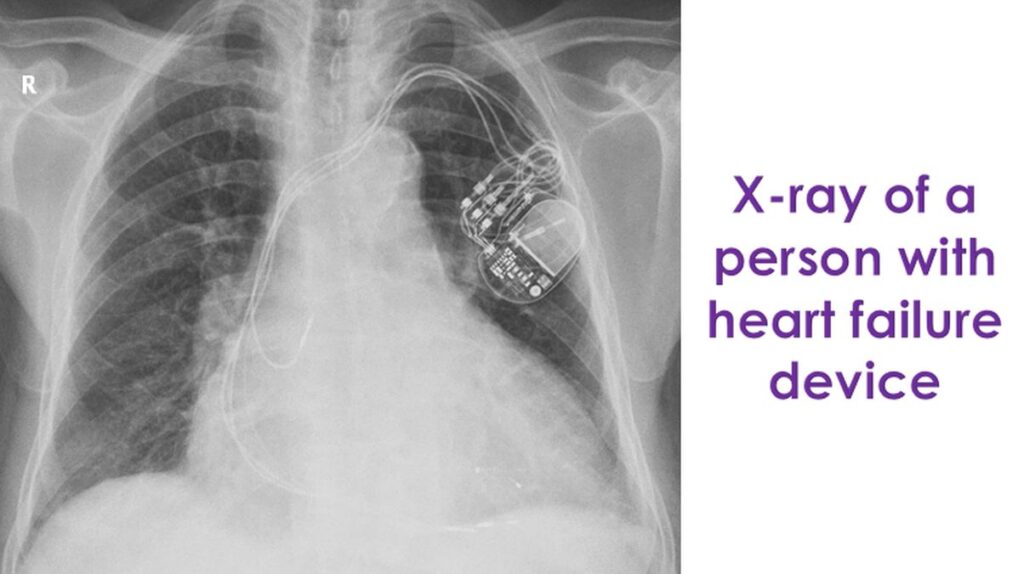What is heart failure with reduced ejection fraction?
What is heart failure with reduced ejection fraction?
Heart failure is the inability of the heart to function well to meet the needs of the body. When the heart is not able to pump out enough blood it is known as heart failure with reduced ejection fraction. Ejection fraction is the fraction of the blood ejected out from the filled heart. The lower chambers of the heart fill when they relax after a contraction. As an example, if left ventricle, the lower left chamber, has 100 ml blood after filling and 35 ml is ejected out during the next contraction, the ejection fraction is 35%. Normal ejection fraction of the left ventricle is above 50%. In heart failure with reduced ejection fraction, the ejection fraction is below 40%.

When the left ventricle is unable to pump out blood well, it enlarges to accommodate the remaining blood. Gradually the pressure in the left ventricle when it relaxes after a contraction increases. This increase in pressure is transmitted back to the left atrium, the upper chamber from which the left ventricle receives blood when it relaxes and fills.
A rise in left atrial pressure is in turn reflected on to the pulmonary veins, which bring oxygenated blood to the left atrium from the lungs. Increase in pressure in the pulmonary veins increases the pressure in the small blood vessels of the lungs known as capillaries.
The lung capillaries line the tiny airspaces of the lungs known as alveoli, where carbon dioxide is removed from the blood and oxygen taken up. When pressure in the lung capillaries rise, fluid from blood move out of the capillaries into the alveoli. When the alveoli are flooded with fluid, they are unable to exchange oxygen for carbon dioxide and person becomes breathless. This situation is known as pulmonary edema. The oxygen saturation in blood falls and this can be very serious.
Main symptom of heart failure is breathlessness, which is initially felt during exertion and later at rest, when the disease is more severe. Fluid can collect under the skin of the legs and in the tummy in very late stages. Weight gain occurs when extra fluid is retained in the body, though in late stages weight may come down due to poor food intake and wasting of muscle mass. Poor appetite can occur due to collection of fluid in the inner lining of the stomach. Blood vessels in the neck become enlarged due to back pressure from the heart. Extreme fatigue is common in severe heart failure.
Heart failure with reduced ejection fraction is the final common pathway for most severe heart diseases like blocks in blood vessels of the heart, heart muscle disorders and diseases of heart valves. High blood pressure, viral infections causing inflammation of the heart muscle (myocarditis), allergic reaction to certain vaccines causing myocarditis and chronic kidney disease are some of the other causes of heart failure with reduced ejection fraction.
If there is a primary cause like blocks in blood vessels or severe disease of heart valves, that can be treated separately in addition to usual medications for heart failure. When there is retention of fluid within the body, medications which increase urine output can be given. Usual medications for heart failure with reduced ejection fraction are those which lower the workload of the heart by enlarging the peripheral blood vessels. Medications which block certain parts of the sympathetic nervous system are also useful in heart failure. Certain new medications which are used to treat diabetes have also been found to be useful in treatment of heart failure with reduced ejection fraction.
When there is no relief with medications, some selected patients may improve with heart failure device, which is known as cardiac resynchronization therapy. It is a device implanted under the skin and connected to three chambers of the heart with lead wires introduced through the blood vessels leading to the heart. The electrical signals given by the device will synchronize the contractions of different parts of the left ventricle and improve the ejection fraction. Eligibility for implantation of the device is decided by checking ECG (electrical recording of the heart) and echocardiogram (ultrasound study of the heart).

Other devices known as left ventricular assist devices can also support the left ventricle when there is no response to medications. A totally implantable artificial heart with good long term function is yet to arrive. But left ventricular assist devices are being used as bridge to heart transplantation as well as destination therapy now. These devices are quite expensive and have a lot of challenges during long term treatment like infections and clot formation. As the final option, heart transplantation can be planned in eligible patients when a heart transplant program is available in the locality. This is also an expensive option, but has better long term prospects than a left ventricular assist device. Better quality of life and survival is provided by heart transplantation for the lucky few who can get it.

